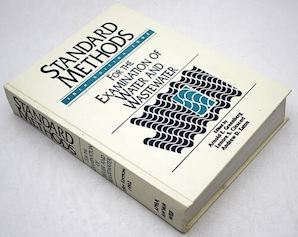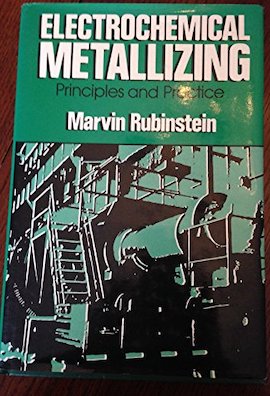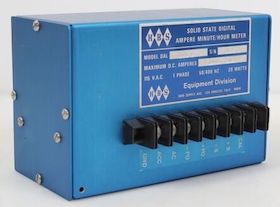
Curated with aloha by
Ted Mooney, P.E. RET

The authoritative public forum
for Metal Finishing 1989-2025

Jump to:
• Thread #3171 "Platinum Plating with P-salt"
• Thread #10870 "Platinized titanium anodes for electroplating: buying, testing, evaluating"
• Thread #32638 "Platinum plating on silver Q&A Problems & Solutions"
• or stay on -----:
Platinum & Platinum Black Plating
Q. Hi
I am working on Pt electroplating with Q salt. During coating, the concentration of Pt reduces as Pt forms on a sample. I measure Pt consumption according to the weight change of the sample and replenish the solution based on the measured data.
Is there any other methods to accurately measure the Pt concentration in the solution? I mean a practical method that can be used in the industrial line of Pt coating (such as titration, using baumé meter or ....). Could you please help me with detailed information about the method?
Thanks for your attention.
Engineer - Tehran
July 22, 2024
A. Hi Mohammad
According to Faraday's Law, the amount of platinum deposited is directly proportional to the amperes x hours (after allowing for 'efficiency'). You should be able to determine the efficiency from your current method, and then you will always have a good indication of how much platinum you consume simply from how long you plated and at what amperage.
There is an "Electrochemical Equivalents" chart in the back of the Metal Finishing Guidebook which starts with Faraday's Law, then applies the necessary conversion factors, and tells you that you will deposit 1.819 grams per amperes-hour of current applied. Ampere-hour meters are relatively simple accessories available from most manufacturers of plating power supplies.
I do not know how to analyze for Q-salt or Platinum, but hopefully another reader will chime in.
Luck & Regards,

Ted Mooney, P.E. RET
Striving to live Aloha
finishing.com - Pine Beach, New Jersey
⇩ Related postings, oldest first ⇩
Q. I am looking for any information on electroplating platinum for microelectronic applications. The application requires a smooth deposit less than a micron thick.
Bob B [last name deleted for privacy by Editor]- Semitool
1998
A. Hi Bob
I toured Semitool a few years back when you guys were developing the wafer-plating platform. What a great outfit you run up there. Platinum is electroplated from two different electrolytes. One is from an orange chloroplatinoic acid and the other is from a black sulfuric/nitric compound. Both are touchy and take a bit of experience to run routinely, as neither is inherently stable while operating. They are offered by Technic, Sel-Rex, etc. The single most important factor in Platinum plating is the substrate material & its preparation. Each of these baths "hate" various substrates. Nickel is the black bath's mortal enemy. Internal tensile stress in Platinum deposits can run extremely high, and in small devices, just a nick can cause a section of the deposit to spring-delaminate. But proper DOE can identify excellent operating parameters that will yield Pt that won't even orange-peel during 90 deg bend test. But again, the trick to working Pt is long-term process maintainability. It takes a lot of effort to keep it running in spec.
Regards,
Dave

Dave Kinghorn
Chemical Engineer
SUNNYvale, California
Platinum black electroplating
Q. I'm looking for information on platinum black and platinum black electroplating. I have been having trouble locating research articles and books pertaining to this topic.
Any help would be appreciated.
Thanks.
Ron Kushner- Sylmar, California, USA
2001
RFQ: I would like to coat Platinum on a Ceramic Tube. Would please suggest me any company working in mass production related to this process?
Dr. Loka Subramanyam Sarma- Taipei, Taiwan, R.O.C
2002
Ed. note: This RFQ is outdated, but technical replies are welcome, and readers are encouraged to post their own RFQs. But no public commercial suggestions please ( huh? why?).
Need platinum black thin film deposited into metal sponge
RFQ: I am looking for a source for plating a thin film of platinum black into the pores of a metal sponge.
Tony Iacovellidirector of R+D - Asheville, North Carolina, USA
2003
Ed. note: This RFQ is outdated, but technical replies are welcome, and readers are encouraged to post their own RFQs. But no public commercial suggestions please ( huh? why?).
Q. I am trying to do platinum black electroplating using ysi 3140 platinizing solution. But I get either clustered or non uniform platinum black coating. Can anybody suggest, how to do a uniform platinum black coating.
Ajay Vikramalabama university - Montgomery, Alabama
2005
AWWA

on AbeBooks
or eBay or
Amazon
(affil links)
A. There is a procedure for coating conductivity electrodes with platinum black in the "Conductivity" chapter of "Standard Methods for the Examination of Water and Wastewater" ⇨
that might be of help to you.

Dave Wichern
Consultant - The Bronx, New York
How to get platinum-rhodium coating on molybdenum metal
We wish to obtain a coating of platinum or Pt-Rh alloy on cylinders made of molybdenum metal. The parts will be exposed temperature of 1600 - 1650 degree C and will also come in contact with molten slags, fluxes and glasses. The components are to be used for measurement of high temperature viscosity of melts. Is it possible to have electrolytic deposition of platinum or Pt-Rh alloy, or deposition from some molten salt bath?
Somnath BasuJamshedpur, India
2006
A. Hello, Somnath. Yes, platinum can be electroplated. Rhodium can be as well -- but I am not sure if a practical Pt-Rh alloy bath exists. Are you sure that platinized titanium would not fill your needs, as this is a well developed and rather commonplace material? Good luck.
Regards,

Ted Mooney, P.E.
Striving to live Aloha
finishing.com - Pine Beach, New Jersey
Q. We are looking into the possibility of selectively plating a small section of a stainless steel rod (both 316L or duplex Stainless steels are being considered) using platinum. Are there any experiences (both positive and negative) that we should be aware of?
Mike TurnerChemical Manufacturing - Dobbs Ferry, New York
2006
A. If yours is an immersion plating approach you should activate the SS in a Woods nickel strike first, then plate with conventional platinum chemistry. For selective plating w/o immersion there is a process called brush plating where the shaft can be rotated during deposition. There are several vendors that offer nickel activators for SS and also solutions to deposit platinum.
Guillermo MarrufoMonterrey, NL, Mexico
Electrochemical Metallizing by Marv Rubinstein

on AbeBooks
or eBay or
Amazon
(affil links)
A. For good adhesion you must avoid an immersion layer, so put your steel into the bath "live". I would also recommend you use a strike - either Woods nickel or some other metal. I would suggest you may want to consider a cyanide strike process and this will give better adhesion. I believe you can still get platinum cyanide baths, but if not, use nickel, copper or silver, then plate with non-cyanide platinum. you may also want to heat treat the stainless steel after giving it a strike to ensure there is no hydrogen entrapment that will affect your adhesion

Trevor Crichton
R&D practical scientist
Chesham, Bucks, UK
A. Brush electroplating is a process will selectively plate areas of larger pieces and platinum is one of the many metals that can be deposited by this method.
Your application seems pretty straight forward but we would need to know more information such as to the thickness, and the number of parts you are interested in plating in order to provide you with any more details.
- Valencia, California
Platinum plating for high voltage (~1000V) electrophoresis
Q. Hello,
I'm a research engineer in a biophyics lab and I'm interested in plating small (1cm^2) electrodes with platinum for a high voltage electrophoresis application - separation of DNA in a conductive gel matrix (such as agarose or polyacrylamide with Tris Borate EDTA buffer) for biotechnology applications. From past experiments with solid Pt electrodes I expect the required current densities during operation of the plated electrodes to be on the order of 50mA/cm^2. I would like to achieve a coating that is as durable as possible, as the electrodes will need to be cleaned regularly. I am also interested in plating Pt-black, as the higher surface area might offer advantages, though this is not a critical requirement.
I've spent the past month experimenting with hexachloroplatinic acid and tetraammine (5Q) plating baths to plate platinum onto stainless steel (hexachloroplatinic acid) and copper (5Q bath). I've had the best success with the 5Q tetraamine bath, which I have prepared according to a paper published by W. J. Basirun (Studies of platinum electroplating baths Part IV: Deposits on copper from Q bath. W.J. Basirun et. al. J. Appl. Electrochemistry, 26 (1996) 873-880): 26mM Pt(NH3)HPO4 + ~30mM sodium phosphate buffer, buffered with NaOH to pH10.4 at 95C. My bath is 40mL of this solution in a 60mL glass beaker [beakers on
eBay
or
Amazon [affil links] sitting on top of a stirring hot plate, with stirring effected by a teflon-encased magnetic stir bar and the temperature is kept between 92 - 96C (approximately).
My electrodes are paddle-shaped pieces of copper (99.6%) waterjet cut from 0.015" thick shimstock and are approximately 0.5cm x 1.5cm. I prepare the surface by sanding with 1200 grit emery paper, washing with ethanol, and then electropolishing in phosphoric acid (522g/L) at ~2V for 10 minutes (current density ~40mA/cm^2) until the surface is shiny. I then rinse in deionized water, dry with N2 and immerse in the plating bath.
I use a piece of platinum wire as a counter electrode, bent in a saw-tooth shaped ring surrounding the copper working electrode at a distance of ~2cm. I do not have a reference electrode and merely apply a potential from an adjustable supply across the two electrodes, and monitor the voltage and current with multimeters. I have used this configuration to deposit both shiny (1.9 - 2.4V) and black (2.3 - 2.5V) platinum with good success - the adhesion is very good and the plate is difficult to remove. However, when I run the electrodes in a strong salt solution at ~40mA/cm^2 (2.5X TBE to achieve high currents at ~30V, for testing) I notice that there are small blue nodules left on the surface of the plated electrode. These deposits are the colour of copper sufate and I am certain that they are ionized copper from the underlying metal. If I can stop these deposits from appearing, I think I will have accomplished what I need to for this proof-of-concept design.
I have a number of questions that I have not been able to answer by looking through literature. I have little knowledge of chemistry, electrochemistry in particular, but I have found your site quite useful thus far and I would like to thank you in advance for any assistance.
In no particular order...
1. What is the 'efficiency' of a bath, in terms of the amount of Pt that can be plated out of it, compared to the amount of Pt it contains, if such a number exists? Is there a surefire way to tell that you've depleted your solution?
2. Is there something inherently uncontrollable about using a two electrode system? If so I'd appreciate any advice on setting up a three electrode system.
3. Are there tricks to ensuring that the plated Pt will have no cracks through to the base metal, if I am not worried about the appearance of the finish? Do alternate layers of Pt black / shiny Pt help?
4. Does operating the plated electrode at high voltages and currents cause damage to the plating? (We currently use solid Pt wire electrodes [the standard for such instruments] and have not had problems with electrode breakdown.)
5. Is there a better choice for base metals, given that my constraints are fairly loose (good conductor, preferably resistant to corrosion as part of it will likely be unplated)?
6. For my application (high voltage, high current densities, in salty buffers), is there a metal other than Pt that might work? (We haven't spent much time experimenting in this regard, but found Pt to be the only metal to work).
7. Is there a way to replenish the Pt in the baths to get around possible problems of bath efficiency?
8. I always encounter references to Pt gauze for a counter electrode; should I be going in this direction as well?
9. Is degassing/deoxygenating important, as I have seen references to it?
This project is currently in a prototype phase, but this is the last major problem to be worked out prior to production. I am keen to speak with companies that specialize in this sort of process, and I contacted four of them previously, but have not received any responses.
Thank you,
Scientific Engineer - Vancouver, British Columbia, Canada
May 27, 2008
A. Dylan
Thanks for a clearly worded and detailed question. It is a rarity.
I do not believe that you will easily get acceptable results by following published papers.
There are many potential problems with your method. As examples; no plater would for choice, use abrasive paper, degrease with ethanol (a poor grease solvent) dry before plating etc. In addition, plating onto stainless steel introduces many other problems and requires special processing to get adhesion. Forget reference electrodes. Platers operate at a predetermined current density, we are usually only interested in voltage for anodising processes.
The plating industry has spent many man/years on developing processes which work reliably. I believe that you could find better use for your research time than trying to emulate them.
Which leaves you with the next problem, finding a suitable supplier.
On the 'home' page go to 'chemicals' then 'Search engine' and enter
'Platinum'.
Your electrodes are so small that any of the precious metal supply houses could probably be persuaded to make a couple of samples for a good cause.
If you are still interested in the technology try "Modern Electroplating" Lowenheim, John Wiley & Sons inc.
[on
AbeBooks,
eBay, or
Amazon affil links]

Geoff Smith
Hampshire, England
A. Hello,
You have a very complicated system.
We do Pt plating (0.0007" thick) first and then it is diffused.
- Minneapolis, Minnesota
Q. We have been using an acid (pH3) ammonium sulfamate bath with diamine platinum sulfamate complex for two years. It seems very temperamental to pH, weekend storage temperature, trace contamination and with all that I can't get it to last more than six months. Even with Barium treatments to drop out sulphate, which forms from the sulfamate hydrolyzing from elevated temperature and acidity at anodes.
Can anyone tell me how to make the complex last longer? It really makes a beautiful deposit when it wants to. The complex that drives the deposit is definitely not the advertised (NH4)2Pt sulfamate. It forms from this over time and under the right temp., pH, density and balance of sulphate. Does anyone have some experience they would like to share?
- Claymont, Delaware
October 12, 2010
Q. I am experimenting with plating for neurological studies and am having trouble finding source of Platinum black on the web. Can anyone help?
Update: I have found suppliers but I still need information on how much PtBlk/liter to use when I plate a Pt electrode. I have read several papers, (Mareese, Feltham/Sriro, Mills, Desai, etc.), they all talk about the plating solution, (typically Cloroplatic acid and a lead compound), but none indicate how much Platinum Black they used.
engineer - Bozeman, Montana, USA
October 18, 2010
A. It depends on what you want to do? To plate platinum black on platinum? In that case you can use next solution and process (According to: G.Buchner:Metallfaerbung, Berlin 1922.): 300 mll water, 10 gm platinum chloride/0,08 gm lead acetate, 4-6 V, current density must be so strong that many gas bubbles forms, after 3-4 minutes poles must be reversed(+=-,-=+) and after 10 minutes black platinum must be formed. Hope it helps and good luck!
Goran Budija- Cerovski vrh Croatia
![]() Thanks for your response. One of my pitfalls was thinking that platinum black needed to be added to the bath rather than the Pt being reduced from the chloroplatic acid.
Thanks for your response. One of my pitfalls was thinking that platinum black needed to be added to the bath rather than the Pt being reduced from the chloroplatic acid.
Electronics - Bozeman, Montana, USA
Selective Plating using Platinum
Q. I was using Rhodium pen plating solution for plating on gold jewelry, but price of rhodium is very high, so I decided to make platinum pen plating solution. Can I use platinum metal dissolved in Aqua Regia or any other idea. Please suggest any idea.
Thanks
- Kochi, Kerala , India
November 15, 2022
A. Expired USA patent US2984604A can be good source of info on that subject.Hope it helps and good luck!
Goran Budija- cerovski vrh Croatia
Q, A, or Comment on THIS thread -or- Start a NEW Thread

